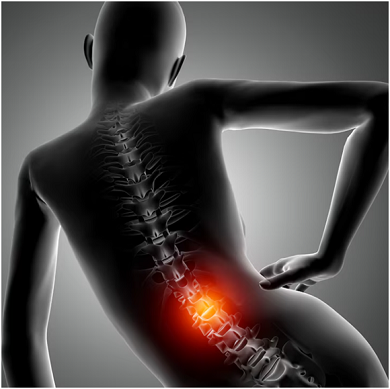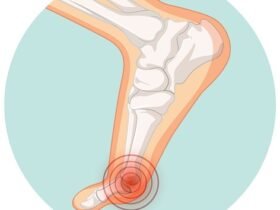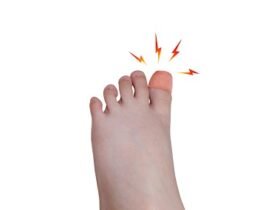Bruised ribs can be a painful and debilitating injury, impacting daily activities and quality of life. One common question that arises when dealing with bruised ribs is: How long does it take for them to heal? While the general timeframe for healing is typically within 3 to 6 weeks, several factors can influence this process. Factors such as the severity of the injury, individual healing abilities, and proper management strategies play a significant role in determining the duration of recovery. Understanding these factors is crucial for effectively managing bruised ribs and promoting a speedy recovery. We will delve into these details further at the end of this article to provide comprehensive guidance on managing and recovering from bruised ribs.
What are Bruised Ribs?
Bruised ribs, also known as rib contusions, refer to an injury where the muscles, cartilage, and tissues surrounding the ribs are damaged but the ribs themselves are not fractured. This type of injury results from a direct impact to the chest area, leading to pain, swelling, and tenderness in the affected region. While bruised ribs are less severe than broken ribs, they can still cause significant discomfort and require proper care to heal effectively.
Types of Bruised Ribs
Bruised ribs can vary in severity and can affect different parts of the rib cage. Here are the detailed types of bruised ribs:
1. Intercostal Muscle Bruising
- Definition: Bruising of the muscles located between the ribs, known as intercostal muscles.
- Causes: Often caused by sudden impact, overuse, or excessive twisting movements.
- Symptoms: Pain during breathing, tenderness, muscle spasms, and difficulty moving.
- Treatment: Rest, ice application, over-the-counter pain relievers, and gentle stretching exercises.
2. Cartilage Bruising
- Definition: Bruising of the costal cartilage, which connects the ribs to the sternum (breastbone).
- Causes: Direct blows to the chest, car accidents, or heavy lifting.
- Symptoms: Sharp pain at the site of injury, swelling, and localized tenderness.
- Treatment: Rest, ice packs, pain management medications, and avoiding activities that strain the chest.
3. Subcutaneous Bruising
- Definition: Bruising of the soft tissues under the skin overlying the ribs.
- Causes: Minor impacts, falls, or blunt force trauma.
- Symptoms: Visible discoloration (bruising), swelling, and mild to moderate pain.
- Treatment: Rest, ice application, and over-the-counter pain relief.
4. Sternal Bruising
- Definition: Bruising of the sternum (breastbone), which may occur along with rib bruising.
- Causes: High-impact trauma such as car accidents or sports injuries.
- Symptoms: Pain in the center of the chest, tenderness, difficulty breathing deeply, and possible radiating pain to the ribs.
- Treatment: Rest, ice application, pain relievers, and monitoring for any signs of more serious injury.
5. Posterior Rib Bruising
- Definition: Bruising of the ribs located at the back of the rib cage.
- Causes: Falls, direct blows to the back, or sports injuries.
- Symptoms: Pain during movement, especially twisting or bending, tenderness in the back, and difficulty sleeping comfortably.
- Treatment: Rest, ice application, pain management, and gentle back exercises as advised by a healthcare provider.
6. Multiple Rib Bruising
- Definition: Bruising that affects several ribs simultaneously.
- Causes: Severe trauma such as car accidents, falls from a height, or significant blunt force impacts.
- Symptoms: Intense pain, difficulty breathing, extensive bruising, and potential for more serious complications.
- Treatment: Comprehensive medical evaluation, rest, pain management, and possibly physical therapy to aid recovery.

Treatment Options for Bruised Ribs
Treating bruised ribs primarily focuses on pain management and allowing the injury to heal naturally. Here are the detailed treatment options:
1. Rest
- Importance: Rest is crucial to allow the injured tissues to heal.
- Recommendations: Avoid activities that cause pain or strain the rib cage, such as heavy lifting, twisting, or high-impact sports.
2. Ice Application
- Purpose: Reduces swelling and numbs the area to alleviate pain.
- Method: Apply an ice pack wrapped in a cloth to the affected area for 20 minutes several times a day, especially during the first 48 hours after the injury.
3. Pain Management
- Over-the-Counter Medications: Nonsteroidal anti-inflammatory drugs (NSAIDs) like ibuprofen or acetaminophen can help reduce pain and inflammation.
- Prescription Medications: For severe pain, a doctor may prescribe stronger painkillers or muscle relaxants.
4. Breathing Exercises
- Purpose: Prevents complications like pneumonia and maintains lung capacity.
- Techniques: Deep breathing exercises, using a pillow to support the chest, and practicing controlled coughing to clear the lungs.
5. Physical Therapy
- When Needed: Recommended for severe cases or when pain persists beyond a few weeks.
- Activities: Gentle stretching, strengthening exercises for the chest and back muscles, and techniques to improve posture and breathing.
6. Supportive Devices
- Purpose: Provide extra support and reduce movement that causes pain.
- Examples: Rib belts or binders (used with caution and under medical advice) to support the rib cage.
7. Heat Therapy
- When to Use: After the initial swelling has reduced (usually after 48 hours).
- Method: Apply a warm compress or heating pad to the affected area to relax muscles and improve blood flow.
8. Avoiding Strain
- Activities to Avoid: Heavy lifting, strenuous exercise, and activities that involve twisting or bending at the waist.
- Posture: Maintain good posture to minimize pressure on the ribs and aid in proper healing.
9. Natural and Alternative Therapies
- Herbal Remedies: Arnica gel or creams to reduce bruising and inflammation.
- Acupuncture: May help in managing pain and promoting healing.
- Chiropractic Care: In some cases, gentle chiropractic adjustments can alleviate discomfort.
10. Monitoring and Follow-Up
- Regular Check-ups: Follow up with your healthcare provider to monitor healing progress.
- Watch for Complications: Be vigilant for signs of complications such as increased pain, difficulty breathing, or fever, and seek medical attention if these occur.

Precautions for Bruised Ribs
Taking precautions can help prevent bruised ribs or mitigate the severity of the injury. Here are detailed precautions to consider:
1. Wear Protective Gear
- Purpose: Reduce the risk of injury during high-impact activities.
- Examples: Use rib protectors or padding when participating in contact sports, motorcycling, or engaging in activities with a high risk of falls.
2. Practice Safe Lifting Techniques
- Importance: Prevents strain and injuries to the rib cage.
- Guidelines: Use your legs to lift, keep the object close to your body, and avoid twisting motions while carrying heavy items.
3. Improve Home Safety
- Aim: Minimize the risk of falls and accidents at home.
- Tips: Keep floors free of clutter, use non-slip mats in the bathroom, ensure good lighting in all areas, and install handrails on stairs.
4. Strengthen Core Muscles
- Benefit: Provides better support for the rib cage and reduces the risk of injury.
- Exercises: Engage in regular exercises to strengthen the abdominal and back muscles, such as planks, Pilates, and core stability exercises.
5. Maintain Good Posture
- Effect: Reduces stress on the rib cage and prevents muscle strain.
- Practices: Sit and stand with your back straight, shoulders back, and avoid slouching.
6. Use Proper Techniques in Sports
- Advice: Learn and practice proper techniques to avoid injuries in sports.
- Examples: Use correct form when tackling, avoid overexertion, and follow the rules of the sport to minimize risk.
7. Avoid High-Risk Activities When Possible
- Consideration: Limit participation in activities that have a high risk of causing rib injuries.
- Examples: Skydiving, extreme sports, or high-contact recreational activities should be approached with caution.
8. Ensure Adequate Nutrition
- Purpose: Support bone and muscle health to reduce injury risk.
- Nutrients: Include adequate calcium, vitamin D, and protein in your diet to maintain strong bones and muscles.
9. Stay Hydrated
- Benefit: Keeps muscles and tissues healthy and resilient.
- Guideline: Drink plenty of water throughout the day, especially during physical activity.
10. Listen to Your Body
- Importance: Prevents overuse and strain that can lead to injuries.
- Practice: Stop activities if you feel pain or discomfort in your rib area, and allow time for recovery before resuming.
If Anything Goes Wrong for Bruised Ribs
1. Increased Pain and Discomfort
- Consequence: The pain may intensify, making it difficult to perform daily activities.
- Examples: Persistent, sharp pain during movement, deep breathing, or coughing.
2. Delayed Healing
- Cause: Engaging in strenuous activities or not adhering to proper care guidelines.
- Impact: Extended recovery time and a higher likelihood of chronic pain.
3. Respiratory Complications
- Risk: Pain may lead to shallow breathing, reducing lung function.
- Examples: Higher risk of developing pneumonia or atelectasis (collapsed lung).
4. Infection
- Consequence: If there is a hidden rib fracture or damage to surrounding tissues, infection can occur.
- Symptoms: Fever, redness, swelling, and increased pain at the site of injury.
5. Muscle Spasms
- Cause: Strain on the intercostal muscles can lead to spasms.
- Impact: Increased pain and discomfort, further limiting movement.
6. Reduced Mobility
- Effect: Pain and discomfort can lead to decreased physical activity.
- Outcome: Stiffness, muscle weakness, and decreased overall fitness.
7. Chronic Pain
- Risk: Improper healing or repeated injury can lead to long-term pain.
- Examples: Persistent rib or chest pain, even after the initial injury has healed.
8. Rib Fracture
- Possibility: Severe or repeated trauma to the bruised area can result in a rib fracture.
- Symptoms: Intense pain, visible deformity, and difficulty breathing.
9. Pneumothorax (Collapsed Lung)
- Cause: Severe trauma can cause air to escape into the space between the lung and chest wall.
- Symptoms: Sudden sharp chest pain, shortness of breath, and rapid heart rate.
10. Internal Organ Damage
- Risk: Severe impacts can damage organs protected by the rib cage.
- Examples: Injury to the lungs, liver, or spleen, leading to internal bleeding and other serious complications.
How Long Do Bruised Ribs Take to Heal?
Here are several factors that can influence the healing time for bruised ribs:
Severity of the Injury:
- Minor bruising may heal within a few weeks, while more severe injuries could take longer.
Individual Healing Ability:
- Each person’s body heals at its own pace, influenced by factors such as age, overall health, and pre-existing conditions.
Age:
- Younger individuals may heal faster due to better overall health and higher metabolic rates.
Pre-existing Conditions:
- Certain medical conditions, such as osteoporosis or weakened bones, may prolong healing time.
Treatment Adherence:
- Following recommended rest, pain management, and rehabilitation protocols can help expedite healing.
Complications:
- If complications arise, such as infections or additional injuries, healing time may be extended.
Level of Activity:
- Limiting strenuous activities and allowing the ribs to rest can promote faster healing.
Overall Health:
- Good nutrition, hydration, and lifestyle habits can support the body’s healing processes.
Medical Intervention:
- In some cases, medical interventions such as physical therapy or medications may be necessary to aid in recovery.
It’s essential to consult with a healthcare professional for personalized advice and monitoring during the healing process.
FAQs
Here are some frequently asked questions (FAQs) regarding the healing time for bruised ribs:
Rest, proper pain management, and following recommended treatment protocols, such as ice application and gentle stretching exercises, can help facilitate a faster recovery.
While some movement is important to prevent stiffness, it’s essential to avoid activities that exacerbate pain or strain the injured area. Gentle movements and gradual return to activities as tolerated are recommended.
While bruised ribs typically heal on their own, it’s advisable to seek medical attention if you experience severe pain, difficulty breathing, persistent fever, or signs of complications such as redness or swelling at the injury site.
While both bruised and cracked ribs can cause similar symptoms, such as pain and tenderness, a healthcare provider can perform a physical examination and may order imaging tests, such as X-rays or MRI scans, to confirm the diagnosis.
It’s important to avoid strenuous exercises or activities that strain the rib cage until the pain subsides and healing progresses. Gradually reintroduce low-impact exercises as tolerated, but listen to your body and avoid anything that causes discomfort.
Sleeping on your back with extra pillows to elevate the upper body or on the uninjured side can help minimize discomfort and promote better rest. Experiment with different sleeping positions to find what works best for you.
Conclusion:
The healing time for bruised ribs can vary depending on factors such as the severity of the injury, individual healing ability, and adherence to treatment protocols. While most cases of bruised ribs resolve within 3 to 6 weeks, it’s essential to listen to your body, follow medical advice, and avoid activities that exacerbate pain or strain the injured area. Seeking prompt medical attention for severe or worsening symptoms is crucial for proper management and to rule out complications. With rest, proper care, and patience, most individuals can expect a full recovery from bruised ribs.












Got a Questions?
Find us on Socials or Contact us and we’ll get back to you as soon as possible.